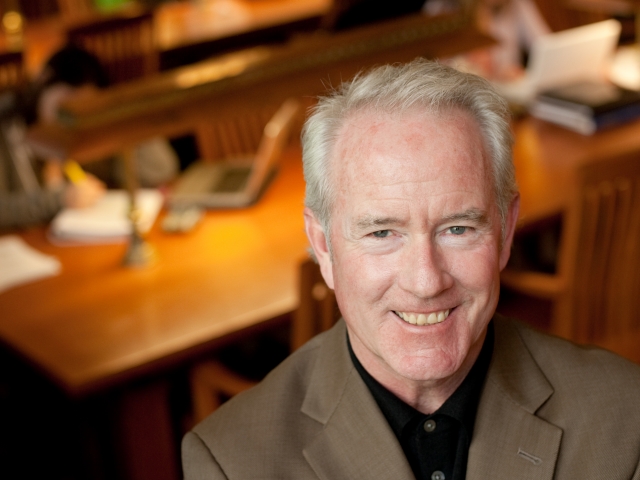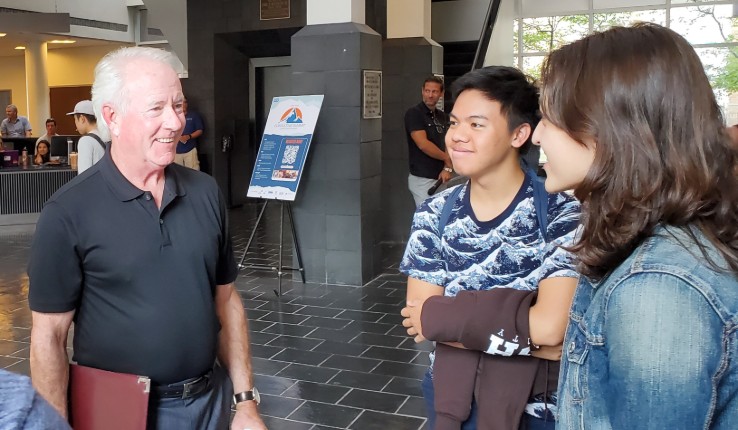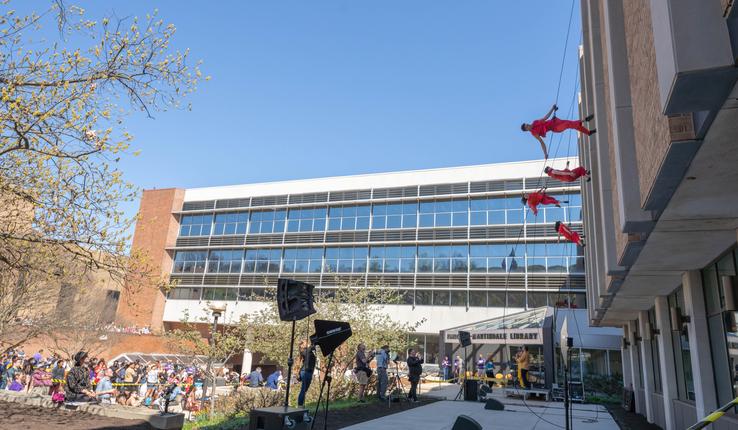“Bruce Taggart’s many contributions to LTS and the wider Lehigh community have helped our university evolve significantly over the past two decades,” says Provost Pat Farrell. “His vision and passion for innovative technologies and collaborative spaces have provided countless opportunities for students, faculty and staff. We wish him the very best as he begins his next chapter.”
An Unexpected Path
Taggart did not start out on the path to a career in technology or education. Instead, he originally thought he would pursue a career in economics or public policy. After earning a bachelor’s degree in public administration, he served as a federal intern for the White House Conference on Balanced National Growth and Economic Development under President Jimmy Carter.
After completing his federal internship with the White House initiative, Taggart went on to graduate school at the University of Connecticut, where he pursued a master’s degree in public policy and discovered a love of teaching and life in academia. As a graduate student he was appointed to a campus-wide strategic planning committee on student technology access and research computing, which would serve as a turning point. Several projects from the strategic plan process received funding for student technology growth and research computing, and soon he shifted to a focus on more technology-related positions, including leading campus-wide technology planning at UConn for several years.
“So I kind of morphed into it,” he explains. “[There was] a recognition of my planning and communication skills at UConn, and then they brought me in to participate on a couple strategic planning projects, and that turned into an exciting career path.”
Taggart earned a Ph.D. in educational administration from UConn and accepted a position as chief technology officer at Portland State University (PSU). During his six years there, Taggart reorganized several separate campus technology areas into a single, integrated Office of Information Technologies; provided all students with Internet access for the first time at the university; worked with the provost to advance faculty development; implemented several new PC labs across campus and in the Millar Library; opened an award winning state-of-the-art multimedia classroom building (Hoffman Hall); co-founded the Portland Research and Education (PREN) gigapop with Oregon Health Sciences University and the University of Washington; and, before leaving PSU, worked with students in the architecture program to design a new “Technology Commons” expansion to the Millar Library.
Then, he says, Lehigh came calling.
“There was huge potential there,” Taggart says. “There was a new president [Greg Farrington]. There was a ‘let’s go’ sense of growth that was about to occur. And it was my first dive into a private university with a formal responsibility for libraries and a larger responsibility to support the research mission.”
Innovating at Lehigh
Taggart has led a number of initiatives during his 20-year tenure. His first major project was a big one: the renovation, preservation and transformation of the Linderman Library.
The seven-year process included the restoration of the grand reading room and the transformation of all other spaces into modernized areas for teaching, research, special collections access, collaborative learning and socialization.
“We put in all the amenities of a modern, state-of-the-art, high-tech library in a 1870s collegiate Gothic building often referred to as our ‘Harry Potter Library,’” says Taggart. Today, Architectural Digest lists Linderman Library as one of the most stunning university libraries in the world to visit.
Also on Taggart’s list in his early days at Lehigh: the 2020 Initiative, Farrington’s plan to envision what Lehigh would need to build and grow to be successful in 2020, which included campus-wide academic planning and also academic infrastructure and e-classroom buildouts.
“About 35 percent of the classrooms had technology in them when I arrived in 2000,” says Taggart. “By the time we were done with the 2020 Initiative, 90 percent of the classrooms at Lehigh were ‘walk-in technology ready.’ So that was a big move...and it made a big impact on faculty teaching and learning.”
He would go on in 2016 to serve as co-chair of the Academic Infrastructure Working Group, along with Jack Lule, professor of journalism and communication. “Every three to five years, you just have to make a large reinvestment of capital to change the classroom environment, because technology changes that quickly,” says Taggart.
At Lehigh, Taggart’s work also included the creation of the Lehigh Lab, a nationally recognized organizational model for a virtual campus learning lab that targets supporting innovation in teaching and learning; the development of the university’s first high-performance computing cluster and computer grid for research; the creation of Lehigh’s Center for Innovation in Teaching and Learning; and the development and implementation of a campus-wide portal system, among many other initiatives. He also served as co-principal investigator on two NSF cyberinfrastructure grants totaling more than $2.3 million, which created Lehigh’s first “Science DMZ” for the ATLSS Center and brought gigabit network access to high-priority research areas in biology and life sciences in the C-wing of Iacocca Hall.






